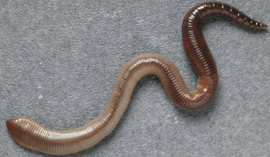I absolutely love the post I am sharing with you today.
Digging for Worms is from the lovely Clare at Emmy’s Mummy.
This is a great activity for a sunny day after rain or for any afternoon when you need to get your little ones outside.
Esther and William adore mud and so I know that we are going to have lots of fun giving this a try.
I hope that you will too.
Let’s go digging for worms!
With the storms we have been having recently (much needed I will add to cool us down a little) It’s been the perfect time to go on a worm dig.
Digging and bugs are universally LOVED by kids, the messier the better and we have been joining in with the Big Worm Dig with Riverford.
Worms love the rain and moist ground so the best time to find them is after it’s been raining or even while it is raining still.
What you need:
Black dustbin bag to place the earth onto
Spade
Plastic container to put your worming into
Welly boots if very wet
Magnifying glass
Rubber gloves f you don’t want to get messy
mustard powder
cold water
Places you could dig for worms:
Garden lawn
field
flower bed
woodland
(Remember to ask permission before you dig though)
Digging
Shady spots are good places to dig. Start by spreading the dustbin bag on the ground. Dig a patch of ground around, this can be as wide as you like but start with a small spot and dig about 10-15cm deep. Place the earth onto the bin bag.
Now you can sift through the earth and put any worms you find into the plastic container, give them a quick wash and then you can look at them under your microscope.
Types of worms you may find are:
 |
| Composters (Composting Worms) |
 |
| The Soil Eaters (Endogeic Worms) |
 |
| The Deep Burrowers (Anecic Worms) |
 |
| The Litter Dwellers (Epigeic Worms) |
Picture credit: Riverford big worm dig
During our dig Emmy was very excited to be able to hold the worms we found, she loved them wriggling through her fingers and enjoyed she kept trying to stop them falling or wriggling away.
We dug for around 20 minutes, long enough for her to dig without getting bored. Daddy enjoyed this too as it meant he could get messy and hands on which he loves.
In the space of 20 minutes we found 8 worms, all Little Dwellers. We were digging in our flower bed with has very hard rubbly ground so I was actually surprised to find so many.
To find deep-dwelling worms you need to help them/encourage them to the surface. for this you need mustard powder.
Mix 2 heaped tablespoons of mustard powder into 2 litres of cold water. Pour this over a bare patch of soil or an area with short grass. Sit back and wait, some earthworms may appear immediately and others may take longer.
We did this and found 2 large worms, then Emmy got bored and wanted to dig some more.
We then went on to make some mud pies in the garden while we were getting messy anyway, a fun filled afternoon outside in the fresh air.
Why don’t you try digging for worms in your garden?
Learning a little about worms: Is it adult or juvenile?
Check each worm for a saddle. This is the cuff-like part of the body. You can check this with a microscope.
If it has a saddle, It’s an adult worm. If it has no saddle then it’s a juvenile worm.


Thank you so much Jennie for letting me guest post on your blog – we had so much fun on our worm hunt, infact we have had several more since 🙂
Gosh, just the title has me grimacing, I mean WORMS are you sure lol, my first thoughts are why on earth would you want to dig for worms, then reading the post I see it can actually be a brilliant idea to get the children used to handling these things that I do not care for, I love spiders, but worms are almost up there with frogs with me, a no no can’t do it ….. but then I should encourage my children to be different from me, thanks for a lovely post, I might just might let my munchkins have ago at this sometime x
this is so cruel !why encourage it? bug hunting is one thing but disturbing ( and potentially injuring ) worms and other creatures like this why? why? why?